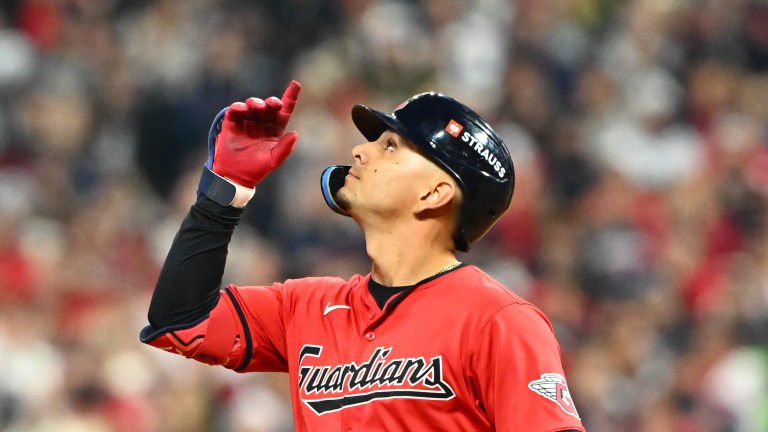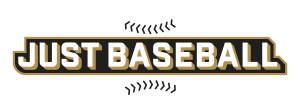Andres Gimenez’s Blue Jays Fit Should Become Clearer in 2026
The Toronto Blue Jays acquired slick-fielding Andres Gimenez from the Guardians, but his true value won't shine through with the Blue Jays until 2026.

On Tuesday evening, the Toronto Blue Jays and Cleveland Guardians agreed to a trade that involved multiple big-league pieces exchanging hands. Heading to the Blue Jays is slick-fielding middle infielder Andres Gimenez and right-handed relief pitcher Nick Sandlin. Cleveland’s side of the deal consists of infielder Spencer Horwitz and outfield prospect Nick Mitchell.
The very first feeling most Blue Jays fans had at the time of the deal being announced was confusion. How on earth were the Blue Jays about to trade for another defense-first player, yet alone another middle infielder? We’ve covered the club’s ridiculous infield logjam before, but to this point very little has been done about it.
Moving on from Horwitz was necessary, but it’s going to be a blow to to the Blue Jays’ offense. Essentially swapping him for less of a bat and more of a glove is a move that is not going to sit right with followers of this organization. Things get even worse when you factor in the Guardians flipping Horwitz to Pittsburgh for a solid haul, but that’s a conversation for another time.
That doesn’t mean Gimenez (and Sandlin) don’t bring tools to the field that are noteworthy. In fact, there’s an extremely high likelihood that both of them end up playing crucial roles for the Blue Jays in 2025 and beyond.
Let’s take a closer look at the immediate and long-term fits of both players, with an emphasis placed on Gimenez, who’s the clear centerpiece in this trade.
How Andres Gimenez Fits in the Blue Jays Plans
At first glance, it’s easy to see why a team that places such a massive emphasis on defense pursued a player like Gimenez. After all, we’re talking about the winner of three straight Gold Glove Awards at second base over the past three years.
The Blue Jays have completely changed the way their organization has been run at the big-league level over the past few years, swapping out Teoscar Hernandez and Lourdes Gurriel Jr. for the likes of Daulton Varsho, Isiah Kiner-Falefa and Kevin Kiermaier. Their attempt at rounding out the defense has worked like a charm – to the tune of two straight Team Gold Gloves – but the offense has struggled.
That’s why Gimenez’s fit on the 2025 Blue Jays is a strange one. The 26-year-old has one (full) season under his belt with an OPS+ north of 100 (league-average), coming in 2022 when he put up 7.4 bWAR and finished sixth in the AL MVP voting. Otherwise, he’s been much more of a glove than a bat.
This past season, Gimenez topped the 150-game mark for the second year in a row, posting a .252 batting average, .638 OPS and 82 OPS+ along with nine home runs and 63 RBI. He went 30-for-5 in stolen base attempts as well, which adds another layer to his value.
On the Blue Jays, Gimenez is going to be the club’s everyday starter at second base in 2025. His acquisition makes Davis Schneider and Will Wagner’s fits a bit more uncomfortable on the roster, but both of them are capable of playing other positions around the diamond, so it’s not going to be impossible to get everyone playing time.
Where Gimenez’s value is really going to be determined is the 2026 season. The young infielder is under team control through 2029 (with a club option for 2030), and that’s where everything could change.
Why 2026 Could Change the Outlook of This Trade
An interesting nugget within this trade is that Gimenez has already been locked up to a long-term contract extension as a member of the Guardians. He is under team control through the 2029 campaign and has a club option for 2030 worked in as well.
This means that, for better or for worse, the Blue Jays are going to have him as an everyday member of their infield for years to come. This also means that once Bo Bichette reaches free agency at the end of the 2025 season, the Blue Jays have a Gold Glove-caliber shortstop already on hand.
Gimenez has experienced the vast majority of his defensive success as a second baseman, but he’s got the range and throwing arm to seamlessly transition to shortstop once Bichette leaves.
For the 2025 season, the Blue Jays infield is likely going to have Bichette at shortstop and Gimenez holding down second base. There’s going to be a ton of players competing for time at second base, but it’s clear that Gimenez is being brought aboard to take this role thanks to his lengthy track record.
Bichette has always been a questionable defender at shortstop, so the Blue Jays are clearly playing the long game with this one. Gimenez has offensive upside and can hold down another position until Bichette leaves, but the former is going to need to tap into some of that upside if this deal is ultimately going to work out for Toronto.
A middle-infield pairing of Gimenez at shortstop and Leo Jimenez at second base beginning in 2026 could be the winning formula for the Blue Jays. This plan working out is contingent on Jimenez building off of the promise he showed in his first look at the big league level in 2024.
Varsho-Moreno 2.0?
No, this trade is not even close to the same magnitude as the swap of Varsho and Gabriel Moreno (and Gurriel) made around this time two years ago. However, they share some similarities because in both trades, Blue Jays fans immediately reacted with negativity and were unwilling to give the trade a shot.
For the longest time, it seemed like Moreno was going to evolve into a superstar while Varsho would be nothing more than a defender in the outfield. Now that that deal has had some time to breathe, Moreno has emerged as little more than a defensive-minded backstop that hits for much more contact than power.
On the flip side of that, Varsho has turned himself into one of the game’s best defensive outfielders and possesses 15-20 home run potential, even if he strikes out a lot and is likely never going to hit for a high average.
The Gimenez deal feels like one that’s going to need a minute to settle before any firm answer is given in terms of who the “winner” is. He has the potential to turn into something special for the Blue Jays, but the fact that the they’re taking on the entirety of his back-loaded contract means there’s a ton of risk coming along with this. This feels like a deal that will either end up as a clear “win” or an obvious “loss”.
If Gimenez turns out to be a complementary acquisition alongside a proven power hitter, this trade winds up looking a whole lot better instantaneously. Time will tell.
Why Spencer Horwitz Was Expendable
So far, the general consensus appears to be that Blue Jays fans are upset the club took on a big salary that’s tied to a player without much pop in his bat. That’s a completely fair note to point out, but it’s also worth mentioning that Horwitz had no defensive position to call home in 2025.
To his credit, he picked up second base basically on the fly this past season, but he never looked comfortable there. He’s a first baseman by trade, but that Vladimir Guerrero Jr. guy has that spot locked down, at least for the upcoming season.
Horwitz is a bat-first player without a place to play defense, and the majority of his hit tool is contact-oriented without a ton of raw power. He could’ve been the Blue Jays’ designated hitter in 2025, but the hope here is that Toronto moved on from him so they can turn around and sign a true power hitter to play DH next season.
What About Nick Sandlin?
Sandlin’s inclusion in this deal fills another much more pressing need for the Blue Jays: the bullpen. The club entered this offseason with a need for three or even four arms in their ‘pen, so adding Yimi Garcia and now Sandlin does an effective job of filling some of the void.
Sandlin, 28 in a month, is under team control through the 2027 campaign and had been an oft-used weapon out of Cleveland’s bullpen for the past four years. The right-hander comes to Toronto with a career 3.27 ERA and over 10 strikeouts per nine innings.
His career 4.41 FIP raises a bit more eyebrows, but the Blue Jays need a high-strikeout arm that’s capable of filling high-leverage innings as needed. Sandlin finished this past season in the 95th percentile in Whiff% and 81st in K% while leaning on a strong four-pitch mix. His repertoire includes a four-seam fastball, slider, splitter and sinker. Notably, his splitter had a batting average against of just .100 in 2024 with a 26.5% usage.
